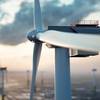LNG Market Recovers in Q2, Says Flex LNG
During the second quarter 2019, spot liquefied natural gas (LNG) freight rates stabilized and started gradually to recover, says Flex LNG, the owner of LNG carrier vessels and floating storage regasification units (FRSUs).
Unseasonably slow demand in Asia over the winter due to fewer heating days caused by warmer weather, and cooler weather than normal in key demand areas early in the summer coupled with ample supply growth from new liquefaction continued to weigh on global LNG prices.
The on-going trade dispute between the U.S. and China is adversely affecting Chinese procurement from the US, it said.
According to industry sources, US exports to Asia have stabilized at around one million tonnes per month, with incremental US export volumes predominantly going to Europe and lately Latin America in the second quarter of 2019, muting tonne mile growth.
According to industry sources, global LNG exports reached 180 million tonnes in the first half of 2019, in line with the expectations of reaching approximately 367 million tonnes by the end of the year. This represents year on year growth of approximately 13%.
2019 is also expected to be a significant year as new liquefaction projects have made final investment decision (FID) and both the Sabine Pass Train 6 (with reported4.5 million metric tonne per annum MMtpa) and the Mozambique LNG ( with reported 12.9 MMtpa) receiving the green light in June 2019.
Subsequently, Calcasieu Pass (with reported 10.8 MMtpa) announced that it has secured funding in July 2019 implying high probability of FID for this facility located in Louisiana, USA.
The increased LNG supply has adversely affected LNG prices, with the average Asian benchmark prices (JKM) dropping approximately 35% lower in the first half of 2019 compared to the first half of 2018.
European LNG prices (NBP) came in 20% lower on the same basis. The low LNG price environment has been positive for demand growth in some regions, predominately Europe, resulting in switching from coal and pipeline gas to LNG. Higher forward gas prices than spot prices have stipulated build-up of, LNG inventory particularly in Europe where inventories are reported to be around 75% full, approximately 17% above the five-year average.
Eight LNG carriers and one floating storage and regasification unit ("FSRU") were reported delivered in the second quarter of 2019, bringing the year to date count to 20 LNG carriers and two FSRUs.
During the second quarter 2019, 11 new orders for LNG carriers were reported. By the end of the quarter, there were 502 vessels above 125,000 cbm in the global LNG carrier fleet, excluding FSRUs.
The order book at the end of the quarter amounted to 106 conventional LNG carriers, of which 43 were reported as ‘uncommitted’. In the second half of 2019, we expect another 20 conventional LNG carriers and one FSRU to be delivered from yards.
Outlook for LNG shipping demand is compelling due to rapidly increasing demand for LNG. The market has absorbed new tonnage as it has arrived, and despite lower than expected tonne mile growth due to muted US - Asia trade and limited arbitrage opportunities, we believe that the market is reasonably balanced.
Flex LNG expects the market for energy-efficient modern LNG carriers to improve going forward, as we approach the winter market, where demand seasonally increases in the northern hemisphere for heating. The long term outlook for the industry continues to be well supported, and we believe that Flex LNG is well positioned to capitalize on the global shift for cleaner energy.













